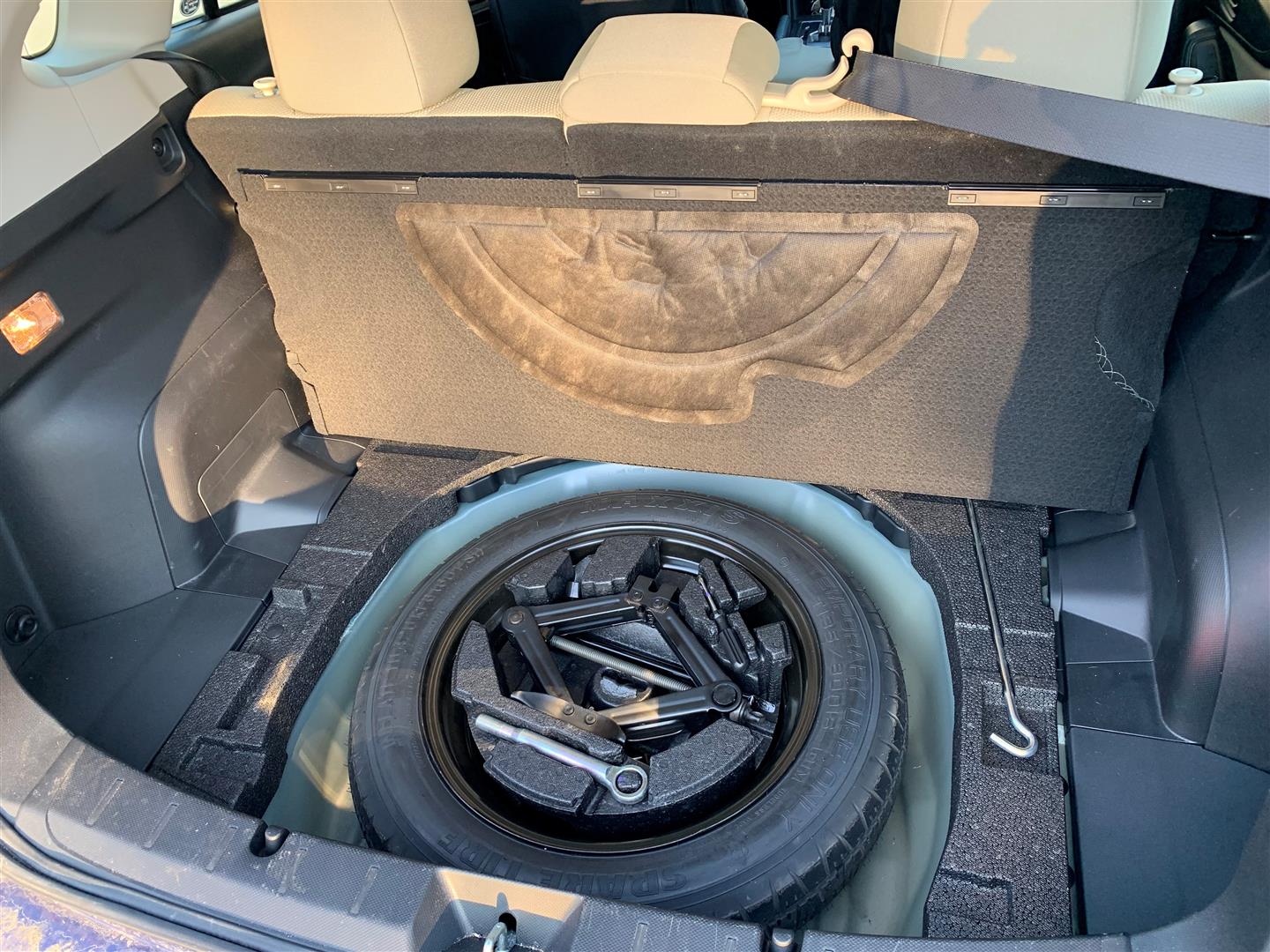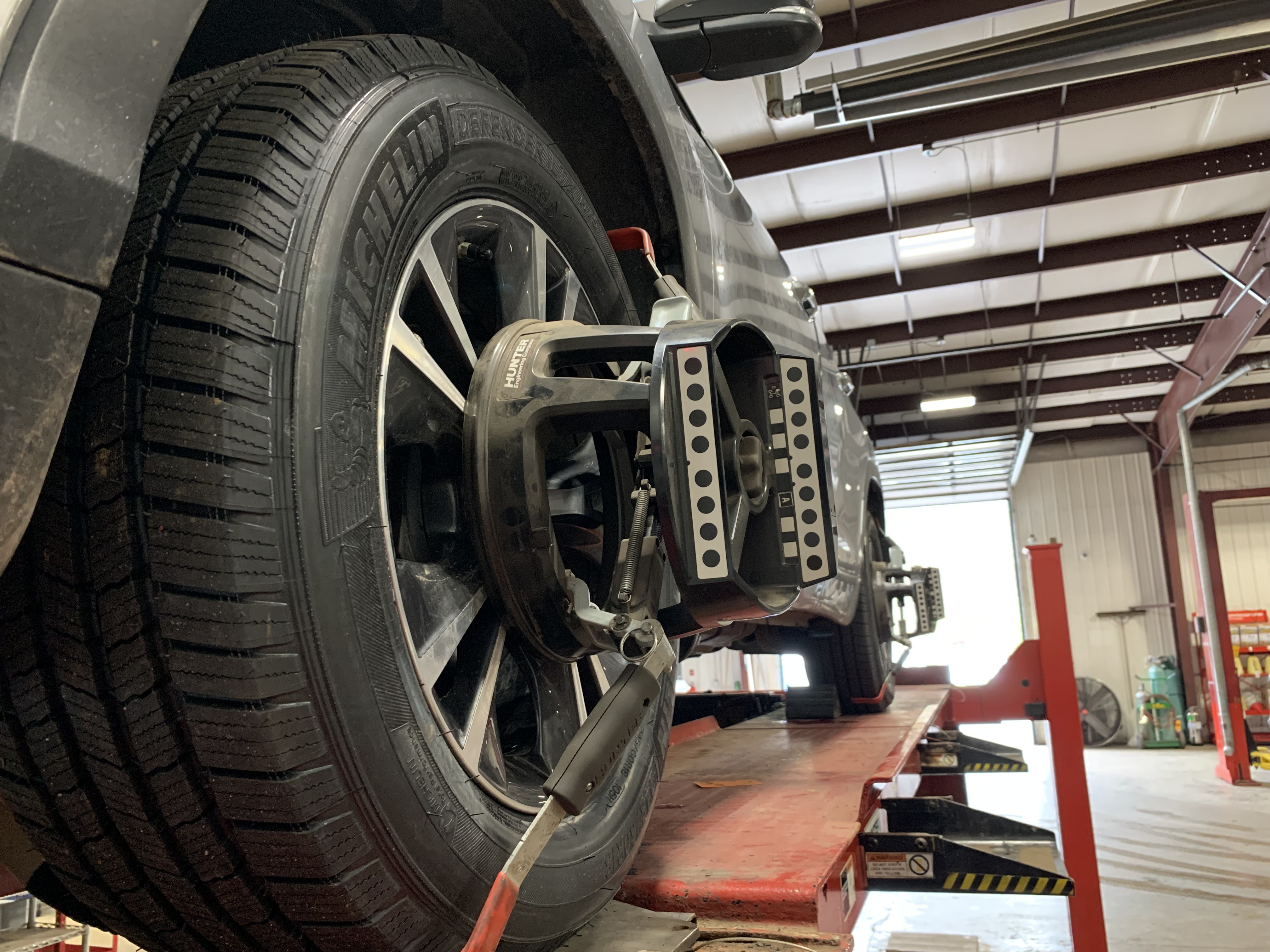Posted on 12/3/2024

Keeping your tires properly inflated is crucial for your safety and your car’s performance. If your tire pressure drops, you might be asking, “What should I do now?” This guide answers your questions and gives clear, actionable steps to handle low tire pressure quickly and safely. Common Reasons Why Tire Pressure Drops If you’re wondering, “Why does my tire pressure keep dropping?” here are the most common causes: Cold Weather: Air contracts in cooler temperatures, reducing pressure. Small Punctures: Objects like nails or screws can create slow leaks. Wear and Tear: Over time, tires naturally lose air. Damaged Valve Stems: A faulty valve can lead to air leaks. Knowing the cause helps you decide whether to refill or seek professional repair. ... read more
Posted on 10/15/2024

If you own an all-wheel-drive (AWD) vehicle, you’ve probably wondered, “Do I need the same tires on all four wheels?” The answer is "yes". AWD vehicles rely on all tires working together, and here’s why having matching tires is essential: 1. Equal Traction for Better AWD PerformanceAWD systems send power to all four wheels to improve traction and control. To work efficiently, all four tires must have the same tread depth, size, and type. Mismatched tires can cause the wheels to rotate at different speeds, which can confuse your AWD system. This can lead to uneven traction, making your vehicle work harder than it should. 2. Protects Your AWD Differential AWD vehicles use differentials to balance power between the f ... read more
Posted on 8/12/2024

When it comes to vehicle safety and convenience, tires play a crucial role. Traditional tires have been the standard for years, but they come with a significant drawback. If they get punctured, you're left with a flat tire, often at the most inconvenient times. This is where run-flat tires come into play. But what exactly are run-flat tires, and how do they differ from conventional ones? Let's dive into the details. What Are Run-Flat Tires? Run-flat tires are designed to keep your vehicle moving even after a puncture or loss of air pressure. Unlike regular tires, which would leave you stranded on the side of the road, run-flat tires allow you to continue driving for a limited distance at a reduced speed. This gives you the opportunity to reach a repair shop or a safe location without having to change the tire immediately. How Do Run-Flat Tires Wor ... read more
Posted on 2/20/2024

Ever wondered what to do when your car starts acting up, making weird noises, or just not driving like it used to? Well, the usual move is to head to the mechanic, right? But what if, even after the mechanic's thorough check, the problem isn't clear? That's where drivability diagnostics steps in. Let's break down what drivability diagnostics really are and how they come to the rescue. Drivability diagnostics is basically a fancy term for a process that figures out what's going wonky with your car's performance. Picture this: there are special tools involved, kind of like the car doctor's toolkit, used to figure out problems in key areas like the engine, transmission, and fuel system. Now, t ... read more
Posted on 4/21/2023

Low-profile tires are becoming popular among drivers who want to improve the performance and look of their vehicles. But what exactly are low-profile tires, and why are they so beneficial? Let's take a closer look at what these tires have to offer. What Are Low Profile Tires? Low-profile tires are sometimes referred to as "low-pro" or "high-performance" tires. They have a short sidewall height compared to other standard tire sizes. This means that the distance between the wheel rim and the tread is shorter than it is on regular tires. This gives the tire a lower profile—hence the name—and makes it appear larger in diameter than it actually is. What Are The Benefits Of Low Profile Tires? The benefits of having low-profile tires can range from improved performance to better road handling. A ... read more
Posted on 11/29/2022

When was the last time you checked your spare tire? Does your vehicle even have one? Many people go years without needing to use their spare tire, and some may never use theirs at all. It is important to check the air pressure in your spare along with your other four tires. Learn more about the best ways to care for your spare and keep you safe on the road. How Long Do Spare Tires Last? Most spare tires last up to ten years. If your spare is stored outside of or underneath your vehicle, you’ll want to check it’s condition more often. Harsh weather and road salt can corrode security bolts making it a challenge to remove the spare. We recommend removing your spare tire at least once a year to ensure it’s accessibility. You’ll also want to inspect the tire for any dry rot or cracking. This can be done when checking the tire pressur ... read more
Posted on 5/2/2022

Tires are one of the maintenance items on a car that should be monitored regularly. Driving on worn tires is a safety hazard and could lead to additional complications with your vehicle down the road. If you’re getting ready to buy new tires, follow these 5 tips to find out how to choose tires that will fit your car and won’t break the bank. Tip #1: Check Your Owner’s Manual Your Owner’s Manual is a treasure trove of information for your vehicle. The manual will tell you the appropriate size and specifications of tires for your car. You can also find this information on a placard on the inside of the driver’s side door. Do not look at the sidewall of your existing tires. They may not be the same size of tire that originally came on your car or truck. Putting the right size tire on your car ensures that the speedometer will be accurate. And the proper loads will be placed on the transmission and other driveline components ... read more
Posted on 4/27/2022

Many people confuse tire alignment with tire balancing and vice versa. While both services provide a smoother and seamless ride, these two services are not the same. Here's what you need to know about their differences. What is a Tire Alignment? Tire alignments (wheel alignments) are adjustments made to a vehicle's suspension system. This is where the vehicle connects to its wheels. This is not a change to the tires themselves. Our mechanics adjust the wheel angles to make sure the tires are making proper contact with the road. What are the Signs of Misalignment? Uneven Tread Wear Vehicle Pulling to the Left or Right Steering Wheel is Off-Center When Driving Straight Steering Wheel Vibration Squealing Tires What is Tire Balancing? A tire balancing service ensures the tire has an even weight distribution. And is usually performed along with a tire alignment service. Weight imbalances of just an oun ... read more
Posted on 4/7/2022

Why Do I Have To Rotate and Balance My Tires? Tire rotations and balancing are often overlooked when it comes to auto maintenance services. While they may seem unimportant, these services are extremely beneficial to the health of your tires. Regularly balanced and rotated tires prevent uneven tire wear and ensure that your tires last longer overall. WHAT IS A TIRE ROTATION? A tire rotation is when your tires are moved from one position to another. For example, a front tire is moved to the back and vice versa. This helps to ensure that the wear on all of the tires stays even over a period of time. WHAT IS TIRE BALANCING? Tire balancing adjusts the tire mounting to ensure that all tires are equally balanced so one side of the tire doesn't have more pressure than the other. It is another way to make sure that your tires wear evenly. These two services can increase the longevit ... read more
Posted on 2/4/2022

Why is my TPMS light on? There is always a level of concern that we feel whenever we are driving down the road and we hear that little “ding” and see that something has lit up on the dashboard. Is it a small, easily fixed problem coming up, or something much worse? One indicator that you might see light up is the TPMS, or tire pressure monitoring system. If you have not seen it before, it looks like a horseshoe with an exclamation point in it. When the TPMS light comes on it means one of two things; either your tire pressure is too high, or it is too low in one or more of your tires. Let’s talk about what you should do when this happens. Check the recommended tire pressure for your car Your car should have a recommended pressure for your front and wheel tires written on the doorjam of the driver’s door. If not, check your vehicle’s manual for the correct numbers. Sometimes, the front tire pressure is meant ... read more